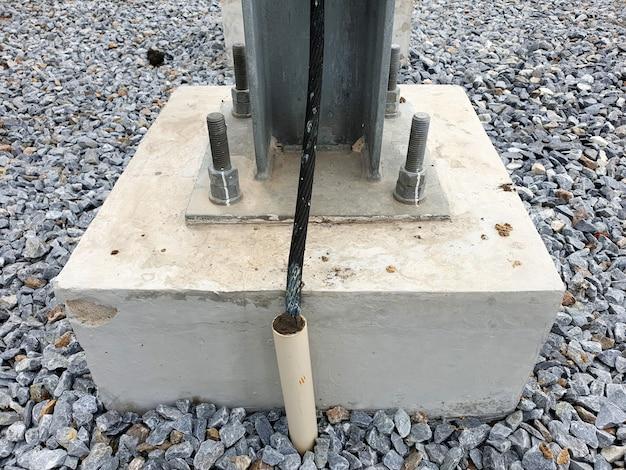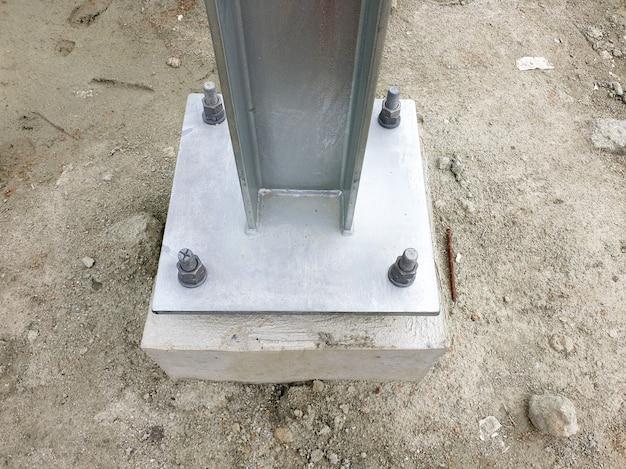In the construction industry, base plates play a crucial role in providing stability and support to columns. These plates are essential components that are placed at the bottom of columns to distribute the weight evenly and ensure a secure foundation. But why exactly are base plates required? Let’s delve into the reasons behind their necessity.
Firstly, base plates help to transfer the load from the column to the foundation. By providing a larger surface area for the transfer of weight, they prevent excessive stress on the foundation and eliminate the risk of column instability. Additionally, base plates aid in achieving proper alignment and leveling for columns, ensuring that they are positioned correctly and securely.
In this blog post, we will explore the various aspects of base plates, such as their construction, calculation of plate weight, grouting, leveling nuts, and more. So, let’s understand why base plates are an indispensable component for column stability and how they contribute to the overall structural integrity of a building.

Why Base Plate is Essential Below the Column
When it comes to constructing sturdy and durable buildings, there’s more than meets the eye. One crucial component that often goes unnoticed is the base plate below the column. Many may wonder, “Why is a base plate required? Isn’t the column enough?” Well, my curious reader, let’s delve into the captivating world of base plates and discover the answers to these intriguing questions.
The Foundation of Stability
To put it simply, the base plate acts as the foundation’s best friend. It is the unsung hero that plays a vital role in providing stability to the structure. You see, columns alone lack the necessary surface area to bear the entire load exerted upon them. That’s where the base plate swoops in to save the day.
Spreading the Load
Picture a toddler balancing on one leg. It’s a wobbly sight, isn’t it? Similarly, a column standing on a small point would be just as unstable. The base plate, on the other hand, spreads the load evenly across a larger surface area. This ensures that the weight is distributed more effectively and prevents excessive stress or deflection in the column.
A Clash with Settlement
In the game of construction, settlement is the antagonist we must always be prepared to face. When a building settles, the ground beneath it moves, causing shifts and unevenness. A base plate helps combat this by providing a sturdy connection between the column and the ground surface. It resists any potential movement and ensures the stability of the column, even if the ground beneath it decides to throw a curveball.
Bolting it Down
Now, you might be thinking, “Can’t we just rely on gravity to hold everything in place?” Well, gravity is indeed dependable, but it never hurts to take extra precautions. A base plate allows for the easy installation of anchor bolts. These bolts further secure the column to the base plate, forming a bond that withstands the test of time and unexpected earthquakes.
Aesthetic Benefits? Absolutely!
While base plates are primarily functional, they can also work their aesthetic magic. Have you ever seen a structure where a column seems to magically emerge from the ground with no visible seams or connections? You can thank the ingeniously concealed base plate for that illusion. It creates a seamless transition and adds a touch of elegance to the overall appearance of the column.
The Importance of Proper Design
Now, before you start slapping base plates on every column you encounter, it’s crucial to understand that their design is not a one-size-fits-all. The size and dimension of the base plate should be carefully calculated to suit the specific load and requirements of each structure. So, leave the design to the experts and ensure the base plate is optimized for your project’s unique needs.
While the role of base plates may seem inconspicuous, they play an indispensable part in ensuring the stability, load distribution, and resistance against settlement in a building’s foundation. Their ability to secure the column firmly to the ground provides both structural integrity and aesthetic appeal. So, the next time you marvel at a towering structure, take a moment to appreciate the unsung hero beneath the column – the base plate.
Keywords: base plate, stability, load distribution, settlement, anchor bolts, aesthetic appeal, foundation.

FAQ: Why Base Plate Is Required Below the Column
Many people often wonder why a base plate is required below a column. In this FAQ-style section, we will answer some common questions about base plates and provide you with a comprehensive understanding of their importance and function.
How Does a Base Plate Work
A base plate plays a crucial role in providing stability and support to a column. It acts as a foundation by distributing the load from the column evenly to the underlying structure. Without a base plate, the column would lack a stable footing, increasing the risk of structural failure. So, think of a base plate as the solid anchor that keeps a column securely in place.
How Do You Build a Column Base Plate
To build a column base plate, you need to follow a specific process. First, the area where the column will be installed is prepared and leveled. Then, a steel plate is carefully positioned and welded onto the structural support. The plate must be securely fastened to ensure stability and prevent any movement. Finally, grout is often poured around the base plate to enhance its structural integrity and bond it to the supporting surface.
How Do You Calculate the Weight of the Plate
Calculating the weight of a base plate requires a simple formula. Multiply the length, width, and thickness of the plate in inches, and then multiply the result by the weight of steel per cubic inch (around 0.2836 pounds). This will give you an approximate weight of the plate in pounds. Keep in mind that this calculation may vary depending on the specific material used.
Why Are Base Plates Grouted
Base plates are often grouted to provide additional strength and stability. Grout is a mixture of cement, sand, and water that, when poured into the gaps between the base plate and the supporting surface, creates a solid bond. This helps to prevent any movement or shifting of the base plate, adding an extra layer of security to the column’s foundation.
What Are Leveling Nuts
Leveling nuts are adjustable components used to ensure that the column is perfectly level before it is tightened to the base plate. They are threaded nuts that can be tightened or loosened to adjust the height of the column. Leveling nuts are essential for achieving proper alignment, especially in situations where the supporting surface may not be perfectly even.
How Much Is One Plate on Each Side
When referring to base plates, “one plate on each side” means that there is one plate positioned on either side of the column. This symmetric arrangement provides balance and equal support to the column. By distributing the load evenly, it minimizes any tilting or leaning of the structure.
How Much Weight Does Four Plates on Each Side Support
With four plates on each side, the base plate can support a significant amount of weight. The exact weight capacity depends on various factors such as the material and thickness of the plates, as well as the overall design and engineering of the column. It is crucial to consult with a structural engineer to ensure the base plate can handle the specific load requirements.
How Do You Calculate the Thickness of a Plate
Calculating the thickness of a base plate involves considering the load requirements and design specifications. Structural engineers use complex formulas and calculations to determine the appropriate plate thickness. These calculations take into account factors such as column height, load distribution, and material strength. It is always recommended to seek professional guidance to ensure accurate and safe plate thickness calculations.
What Is a Leveling Plate Used For
A leveling plate is a specialized component used to adjust the height and alignment of a column during installation. It provides a stable surface for leveling nuts to rest on, allowing precise adjustments to be made. By using leveling plates, contractors can ensure that columns are perfectly aligned and leveled, which is crucial for structural integrity and aesthetics.
What Is a Stiffener Plate
A stiffener plate is an additional plate often welded to the base plate to enhance its strength and stability. It is typically attached perpendicular to the base plate, providing extra reinforcement against bending or distortion. Stiffener plates are employed in situations where the base plate requires additional rigidity to withstand heavy loads or dynamic forces.
What Is Steel Leveling
Steel leveling is a process that involves adjusting the height of a steel column to achieve perfect alignment and balance. It is typically done using leveling nuts and leveling plates, ensuring that the column stands straight and level. Steel leveling is crucial for maintaining structural integrity, preventing uneven weight distribution, and maximizing the overall stability of the column.
Now that you have a better understanding of why base plates are essential for columns, you can appreciate the vital role they play in ensuring structural integrity and stability. If you have any more questions or inquiries, don’t hesitate to consult with a qualified structural engineer who can provide personalized guidance based on your specific project.
